CAUTION: AFTER IMAGE MAY CAUSE CONFUSION, WONDERMENT, AND A GENERAL QUESTIONING OF THE REALITY OF THE WORLD AROUND YOU.
Andrew Beck is an Auckland based artist who has exhibited his work in New Zealand as well as Tokyo, Melbourne and Berlin. What began as a study of photography at Massey University of Wellington transformed into an exploration of the creation of photographs without a camera. This may sound like a fool’s errand, but photography has its roots in the method. Early developments in photography by scientist Anna Atkins for example, with the Cyanotype (fig.1) or more famously Lace (fig. 2) by William Henry Fox Talbot, saw the use of photosensitive paper that reacted with light when exposed. Read Lucy Jackson’s Adam Art Gallery Seminar Series: ‘In Absentia: The Politics of Cameraless Photography’ by Geoffrey Batchen for a more detailed discussion about the medium. What Beck has done is utilised this technique in his rhetoric about the use of space and its interaction with light. His installation in the Adam Art Gallery entitled After Image is part of a larger exhibition The Specious Present, which consists of four artists whose work visually articulates William James concept of the ‘specious present’. It denotes a period of time that is longer than the present moment but that exists between the past and the future.
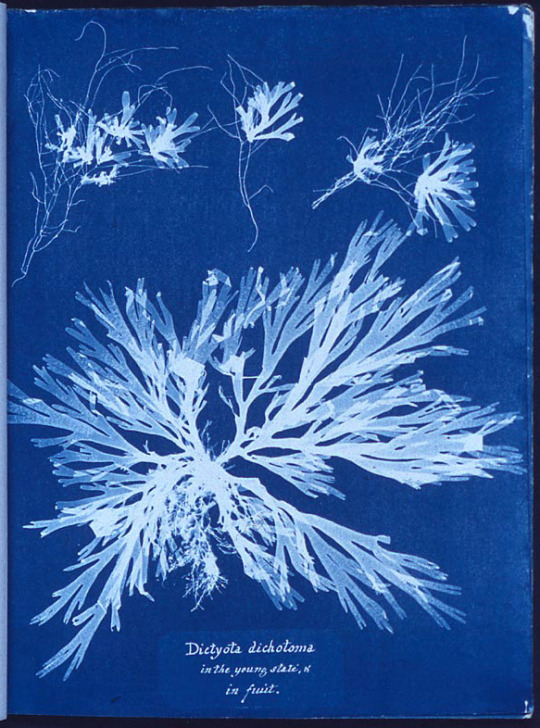
Fig. 1
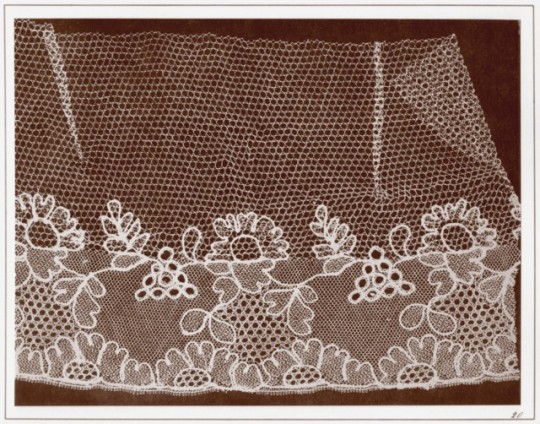
Fig. 2
When I first saw Beck’s pieces at the exhibition, I was immediately enthralled, intrigued, and a little more than confused. He had created objects of indeterminate origin, undetectable technique and interesting form. To quote the Greek philosopher Socrates – ‘I am wise because I know one thing, that I know nothing’. I was flummoxed. What was obvious however was that Beck was playing off the light and space of the gallery itself. An innate understanding that your experience of a piece such as Linear Split (8 phases) (fig. 3), depended on your understanding of light and corresponding shadows and the way these were cast within the gallery space was obvious. Beck achieves through his work a sense of spatial awareness both in the viewer but also of the objects themselves. Shadow Strips Cascade (fig. 4) for example is a site specific piece that relies on the strip of light contributed by the architecture of the gallery itself, each photogram is made to look like a reaction to the piece directly before it. To create these Beck would place a piece of paper overtop of another light sensitive piece and with exposure to light would cause the white silhouette to remain. This to me is the epitome of the ‘specious present’ by which the cascade represents a continuous reaction to the light of the gallery space that means the artwork remains in a constant state of stasis.
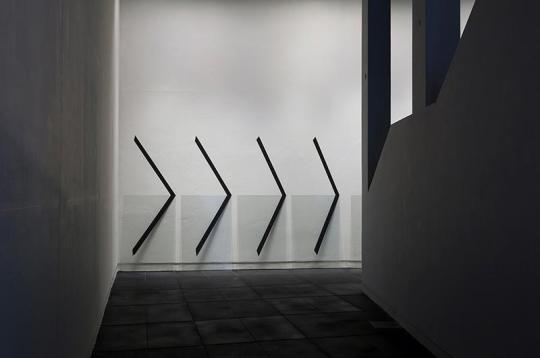
Fig. 3
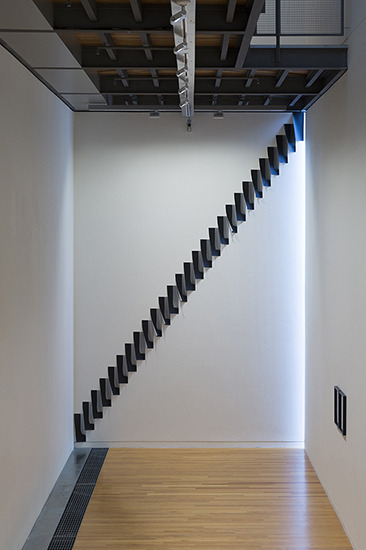
Fig. 4
Beck’s artwork itself exists in an in-between, and is a play on the duality of being, in that it becomes both photograph and painting, object and shadow, natural and manmade. As I stood in front of his work Linear Split (8 phases) my friend pointed out to me that she couldn’t decide whether the shadows projected by the glass were painted on or were in fact real shadows cast by the installation. We proceeded to spend a further ten minutes inspecting the shadows and still coming to no conclusion. Beck’s body of work intentionally plays on the exhibition space itself, causing you to question the validity of the term ‘unusable space’, what is gallery and what is installation, what is real and what is manufactured. An exhibition of Beck’s at the Galerie Luis Campaña utilised paint to create Invariant Shadow (fig. 5) which saw an abstraction of the idea of the realistic shadows that have previously plagued his work, to develop into a question surrounding the credibility of the work itself. The space, previously written-off as unusable in a gallery context, is transformed into a work of art through manipulation of our understanding of light sources, cast shadows and gallery space.
Fig. 5
Some of Beck’s earlier works betray the scientific facet of the medium’s ancestry. 11.35-11.55am (light drawing) (fig. 6), required knowledge of light patterns in situ at the Hamish McKay Gallery in Wellington. The abstract sundial (fig. 7) in the open window at the Govett-Brewster in New Plymouth was also time and light reliant, and echoes the use of the cyanotype by Atkins for documentary purposes rather than artistic. This piece represents a specific time of day that Beck has transformed into a continuous moment, the shadow of which is painted in black as cast by a metal rod. The metal rod embodies the ubiquitous nature of objects, by which the rod is industrial but has now been transformed into ornamental. These earlier works stand to show the development of Beck’s work from studying sources of light in relation to time, to involving space and creating philosophical, abstract objects of modernity.
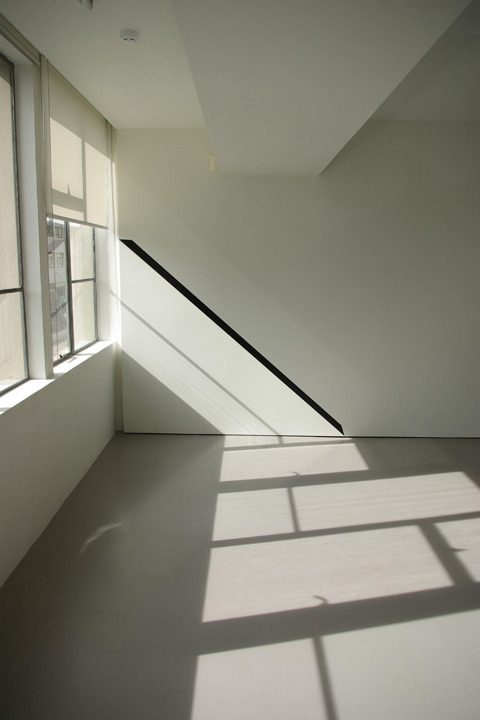
Fig. 6
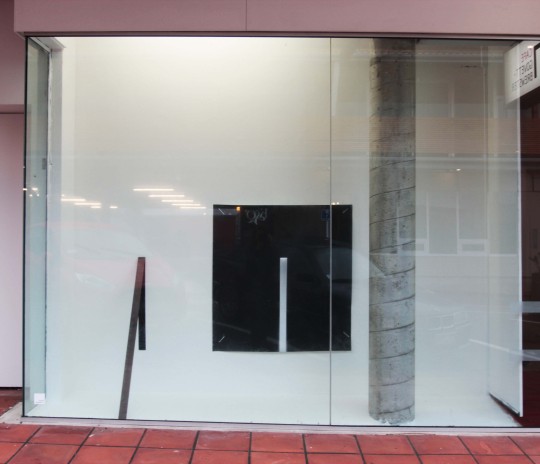
Fig. 7
When filtered through the medium of photography again, Beck’s images transform to inhibit another dimension. A dimension that is becoming more prevalent in a world of technology and social media, and the availability of that technology which encourages the institution of the snapshot photograph. The reflective surfaces of such intriguing photograms invite the viewer to use their own cameras to capture an image of the pieces such as Descending Platforms (fig. 8). The resulting photograph involves the viewer, who has thus been transformed into the object, as a representation of themselves is merged with the image of Beck’s. The viewer now also occupies the space of the image, meaning that in a way the viewer has come full circle in not just observing visual representations of the specious present, but becoming a part of it.
When filtered through the medium of photography again, Beck’s images transform to inhibit another dimension. A dimension that is becoming more prevalent in a world of technology and social media, and the availability of that technology which encourages the institution of the snapshot photograph. The reflective surfaces of such intriguing photograms invite the viewer to use their own cameras to capture an image of the pieces such as Descending Platforms (fig. 8). The resulting photograph involves the viewer, who has thus been transformed into the object, as a representation of themselves is merged with the image of Beck’s. The viewer now also occupies the space of the image, meaning that in a way the viewer has come full circle in not just observing visual representations of the specious present, but becoming a part of it.
Fig. 8

No comments:
Post a Comment